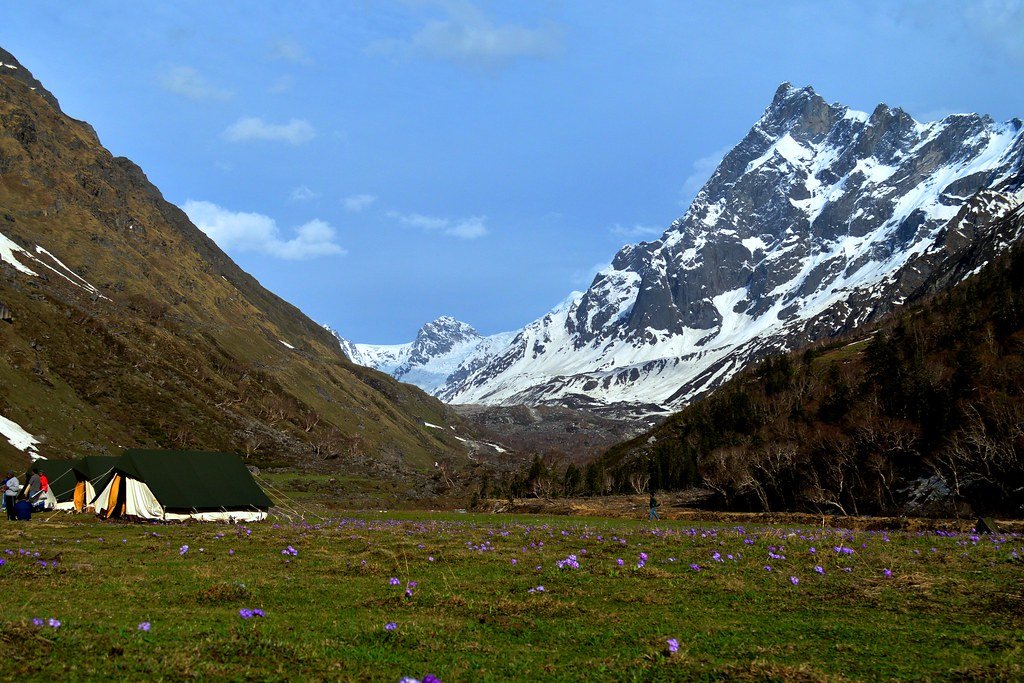Manali: Where Every View Inspires | Places To Visit In Manali | How To Reach
Manali, nestled in the mountains of Himachal Pradesh, India, is a picturesque hill station renowned for its stunning landscapes, adventurous activities, and rich cultural heritage. Located at an altitude of 2,050 meters (6,726 feet) in the Kullu Valley, Manali is a popular destination for both nature lovers and adventure enthusiasts. The town is famous for its snow-capped peaks, lush forests, and meandering rivers, offering a perfect retreat for those seeking solace in nature’s lap. Manali is also known for its vibrant culture, with a mix of Hindu and Tibetan influences reflected in its temples, monasteries, and local cuisine. Visitors to Manali can enjoy a variety of activities, including trekking, paragliding, skiing, and rafting, making it a year-round destination for adventure seekers. The town is also a gateway to other popular destinations in the region, such as Rohtang Pass, Solang Valley, and Kullu, adding to its allure as a must-visit destination in Himachal Pradesh.
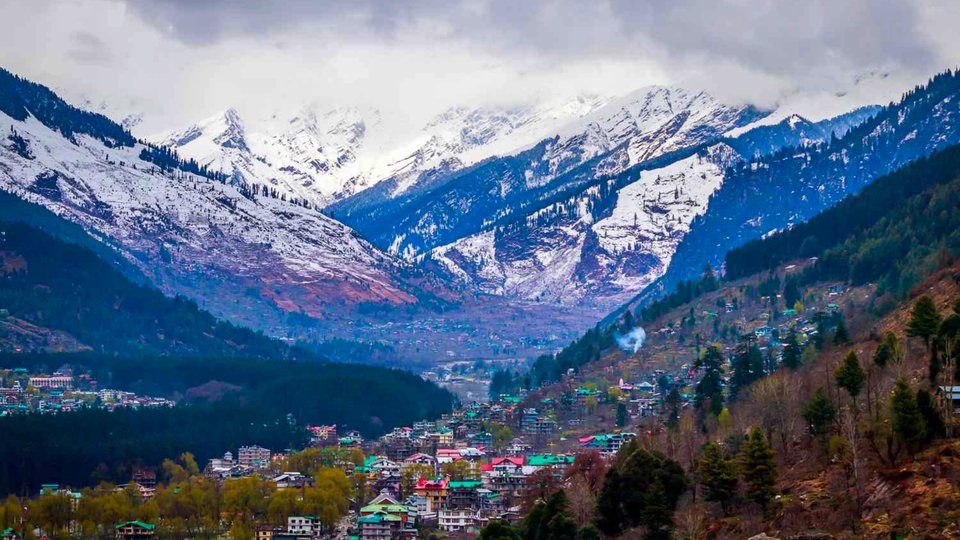
Best Places To Visit In Manali:
Highlights include the Rohtang Pass for breathtaking views and adventure sports, Solang Valley for picturesque landscapes and more adventure, and the Hadimba Temple for cultural immersion. Manali’s hot springs at Vashisht Temple offer relaxation.
Here are some places to visit in Manali:
1. Hadimba Temple:
The Hadimba Devi Temple, also known as the Hadimba Temple, stands in Manali, a picturesque hill station. This ancient sanctuary, built around 1553 CE by Maharaja Bahadur Singh, honors Hidimbi Devi, the consort of Bhima from the Indian epic Mahābhārata. Hidimbi’s tale unfolds within these sacred walls: born into a Rakshasa family, she pledged to marry one who could defeat her brother, Hidimb. During the Pandavas’ exile, Bhima vanquished Hidimb, leading to his union with Hidimbi and the birth of their son, Ghatotkacha. Nestled amidst scenic hills and encircled by majestic cedar trees in the Dhungri forest area, the temple’s sanctum encloses a massive rock housing a mere 7.5 cm (3 inch) tall brass idol of the goddess. The temple’s architecture is a marvel, featuring intricately carved wooden doors and a 24-meter-tall wooden “shikhar” (tower) crowning the sanctuary. This tower boasts three square roofs clad in timber tiles, topped by a fourth cone-shaped brass roof. The main door’s carvings showcase depictions of the earth goddess Durga, animals, foliate designs, dancers, scenes from Lord Krishna’s life, and the Navagrahas.
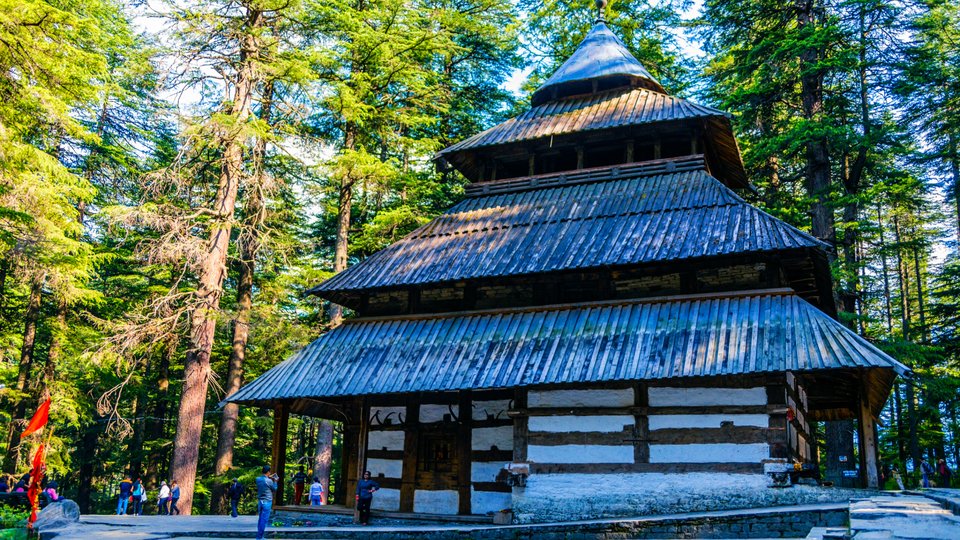
Visit Time: 8:00 am to 6:00 pm
2. Solang Valley:
Solang Valley, located near Manali. is a picturesque valley known for its stunning views of snow-capped mountains and lush greenery. It is a popular destination for adventure enthusiasts, offering activities like paragliding, skiing, and zorbing. The valley is also home to the Solang Ropeway, which offers breathtaking views of the surrounding landscape. The optimal time to visit Solang Valley is from December to February when the valley is blanketed in snow. The ideal months are from April to November.
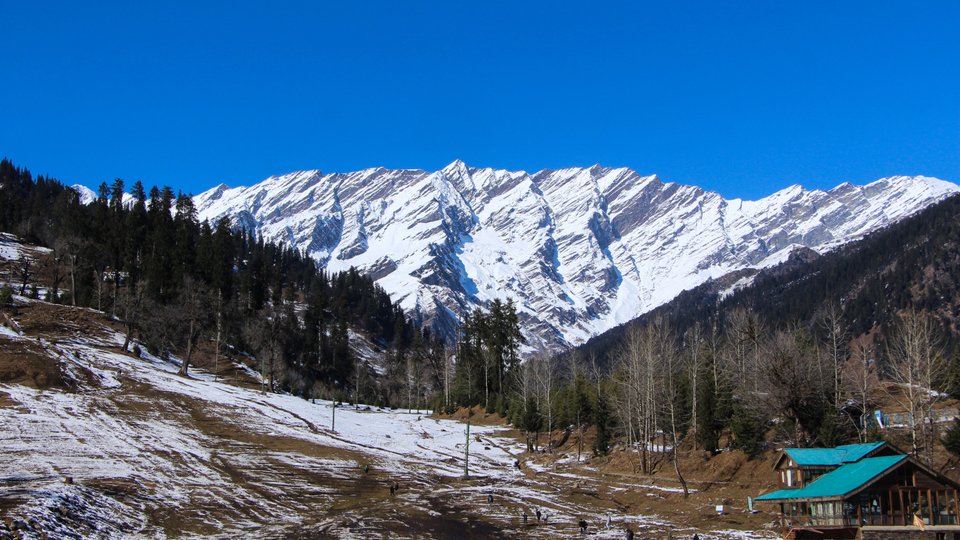
Visit Time: 10 AM to 6 PM every day
3. Old Manali:
Old Manali is a charming village located near Manali. Known for its laid-back vibe and scenic beauty, Old Manali offers a peaceful retreat away from the bustling town. The village is dotted with traditional wooden houses, narrow lanes, and apple orchards, giving it a rustic charm. Old Manali is also known for its vibrant culture, with local cafes, shops, and guesthouses lining the streets. It is a popular destination for backpackers and travelers looking to experience the authentic Himalayan way of life.
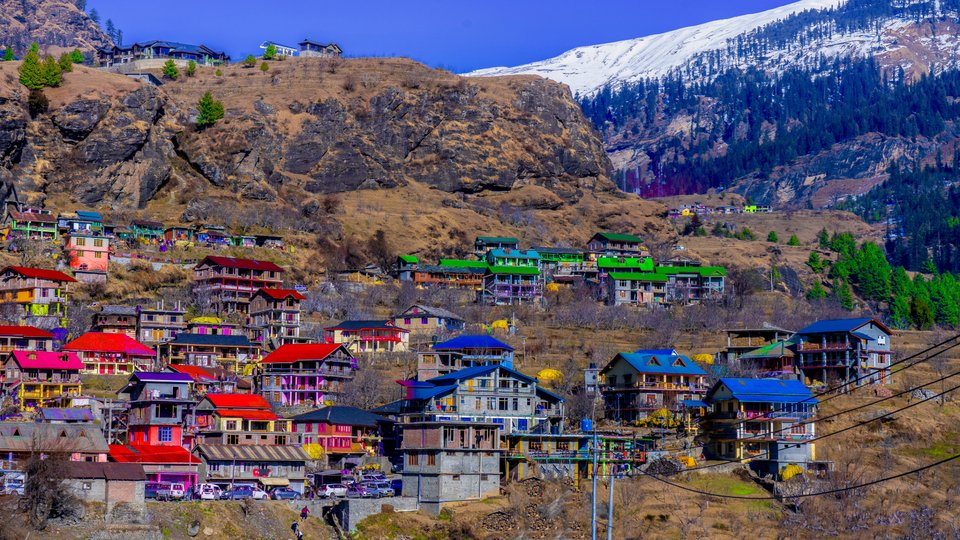
4. Manu Temple:
The Manu Temple, a serene sanctuary devoted to Sage Manu, the purported progenitor of humanity in Hindu lore, is nestled in the picturesque Old Manali region, along the banks of the Beas River. This temple’s pagoda-style architecture harmonizes with its natural surroundings of majestic mountains and lush forests, making it a captivating attraction in Manali and a revered site for Hindus.
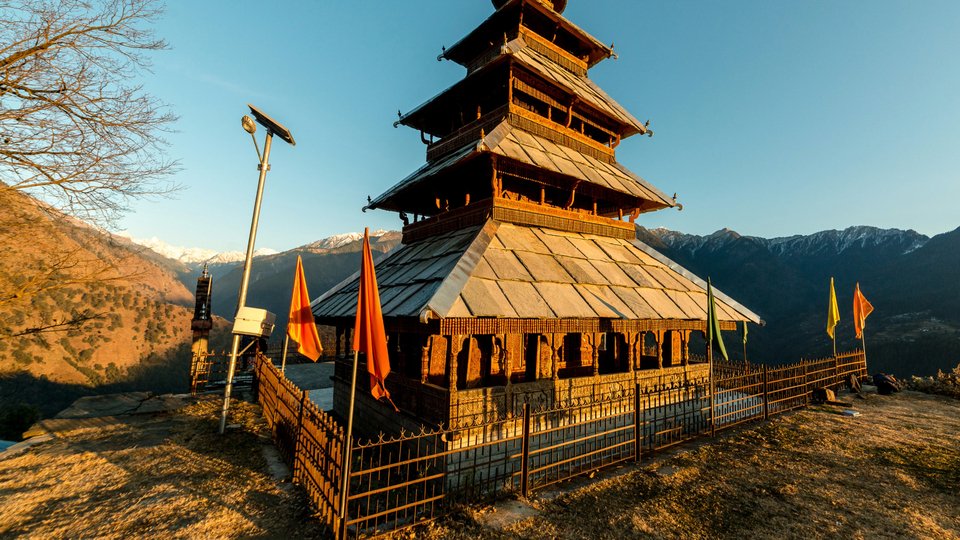
Visit Time: 5:00 am to 9:00 pm
5. Vashishtha Temple and Hot Water Springs:
Vashishtha Temple and Hot Water Springs are renowned attractions in Manali, a picturesque hill town. Dedicated to sage Vashishtha , the revered guru of Lord Rama, the temple showcases remarkable architecture and intricate carvings. Adjacent to the temple are sulphurous hot springs, believed to possess healing properties for various ailments. The village of Vashishtha , where the temple is located, is famous for its apple orchards and traditional handicrafts. The best times to visit are May to June and September to November, when the weather is pleasant for outdoor activities. The temple is accessible by bus or cab from Manali Bus Station, approximately 3.5 km away.
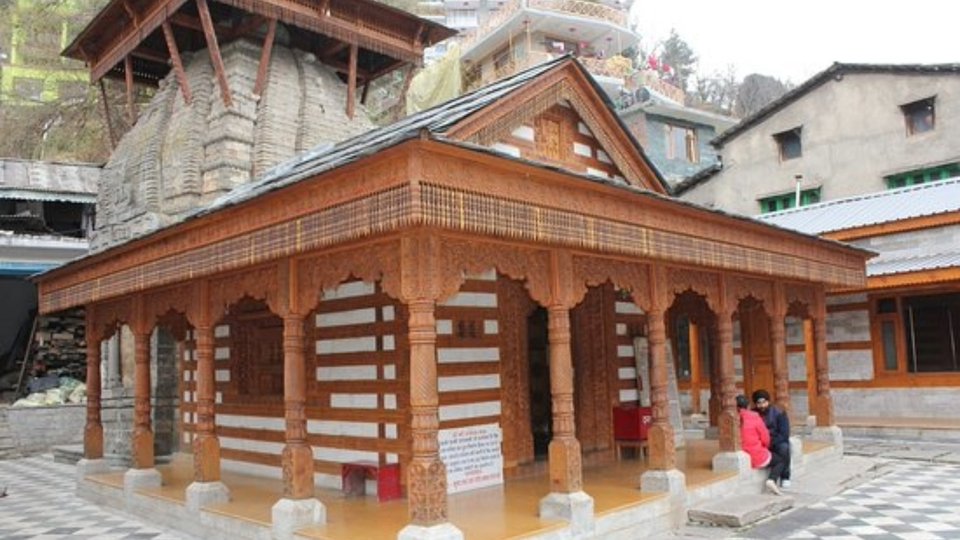
Visit Time: The temple is open from 7 am to 9 pm, and the hot springs are open from 7 am to 1 pm and 2 pm to 9 pm on all days.
6. Naggar Castle:
Naggar Castle stands as a historic marvel in Naggar Town, near Manali, Constructed in 1460 AD by Raja Sidh Singh of Kullu, this castle served as his regal abode and administrative hub. A fine blend of European and Himalayan architecture, the castle is crafted from stone and wood, showcasing intricate craftsmanship. Inside, it houses three quaint temples and offers a breathtaking panorama of the surrounding hills and the Beas River. Presently, Naggar Castle has been transformed into a heritage hotel managed by the Himachal Pradesh Tourism Development Corporation. Visitors can book a room and immerse themselves in the scenic beauty and rich cultural heritage of the region.

7. Jogini Falls:
Jogini Falls, a captivating waterfall near Manali, is nestled just 3 kilometers from the town center and 2 kilometers from the Vashishtha Temple. This natural wonder is a popular destination for tourists, offering opportunities for trekking, picnicking, and soaking in the breathtaking views of the valley and the snow-capped mountains. The waterfall holds cultural significance, revered as a sacred site dedicated to the village goddess Jogini, representing female power or Shakti Peeth. To reach the falls, follow a scenic trail from the Vashishtha Temple, meandering through pine trees and orchards. This trek, suitable for both beginners and experienced trekkers, takes approximately 3 hours. Along the way, you can also explore the Vashishtha Baths, natural hot springs renowned for their medicinal properties.
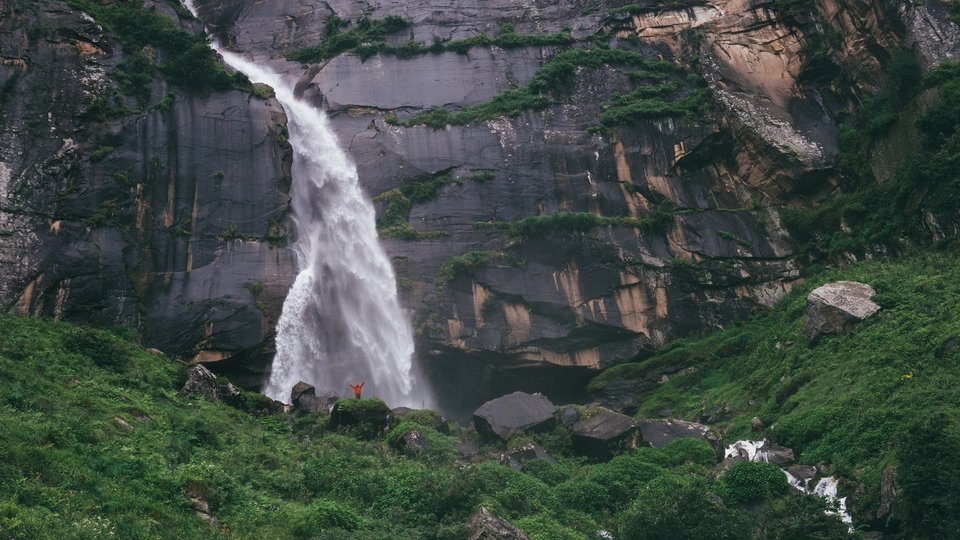
8. Manikaran:
Manikaran is a small town in the Parvati Valley of Himachal Pradesh, about 45 km from Manali. It is a popular pilgrimage destination for Hindus and Sikhs, who visit the temples and the gurudwara here. Manikaran is also famous for its natural hot springs, which are believed to have healing properties. Some of the attractions in Manikaran are:
- Manikaran Sahib: This is a majestic gurudwara situated on the banks of the Parvati river. It is said that Guru Nanak, the founder of Sikhism, performed a miracle here by making the hot springs appear. The gurudwara provides complimentary langar (community meal) to visitors and features natural steam baths as well.
- Hot Springs: The hot springs in Manikaran are located near the temples and the gurudwara. The water is so hot that it can boil rice and vegetables. The springs are abundant in sulfur and other minerals, believed to have healing properties for skin diseases and joint pains.
- Kulant Pith: This is a sacred site for Hindus, where Lord Shiva and Goddess Parvati are believed to have stayed for 1100 years. According to legend, Parvati lost her precious earrings in the river, and Shiva ordered the serpent god Shesha to retrieve them. The serpent’s hissing caused the water to boil and the earrings to emerge. The name Manikaran translates to “jewel of the ear.“
- Lord Shiva Temple: This is an ancient temple dedicated to Lord Shiva, located near the hot springs. It is said that the temple was destroyed by an earthquake in 1905, but was miraculously rebuilt by itself. The temple’s distinctive feature includes cooking rice in muslin bags submerged in the hot water.
- Lord Ramachandra Temple: This is another old temple dedicated to Lord Rama, situated on the opposite bank of the river. It is said that Rama and his wife Sita visited this place during their exile. The temple houses a stunning idol of Rama, sculpted from a single stone.
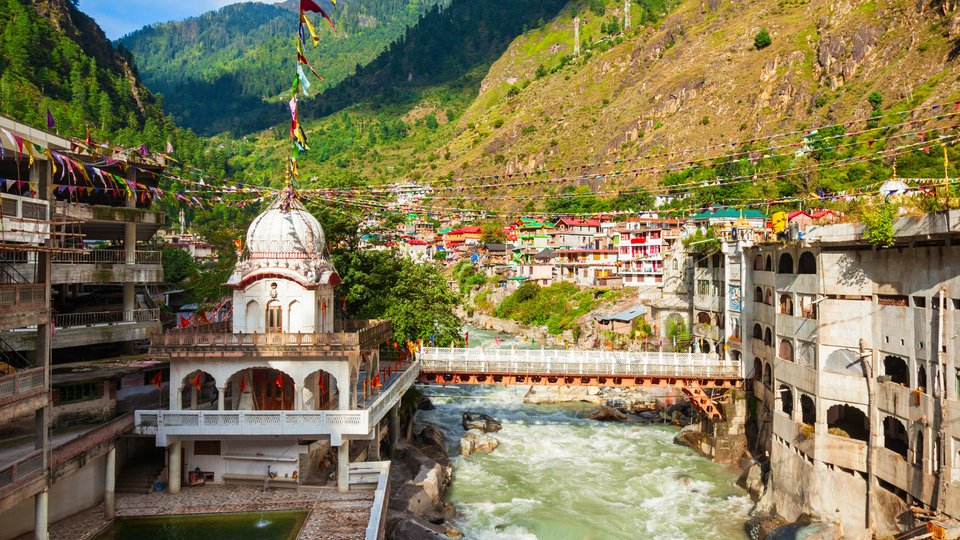
9. Hampta Pass:
Hampta Pass, a thrilling trekking destination near Manali, offers a scenic adventure through contrasting landscapes. This crossover trek transitions from the lush green valleys of Kullu to the rugged terrain of Lahaul and Spiti. The trek includes a visit to the stunning Chandratal Lake, a glacial lake enveloped by majestic snow-clad peaks. Rated as a moderate difficulty trek, Hampta Pass can typically be completed in 4 to 6 days, depending on the chosen itinerary and prevailing weather conditions. The ideal time to embark on this trek is from mid-June to September, when the snow has melted, and the trail is adorned with blooming flowers, enhancing the picturesque journey.

10. Gulaba:
Gulaba, situated near Manali en route to Rohtang Pass on the Leh-Manali Highway, derives its name from Raja Gulab Singh of Kashmir, who once set up camp here. This quaint village is a sought-after tourist destination, celebrated for its picturesque landscapes, snow-centric activities, and camping opportunities. Gulaba offers panoramic vistas of snow–capped mountains, verdant meadows, and the meandering Beas River. Adventure enthusiasts flock to Gulaba to partake in skiing, snow biking, yak riding, and paragliding, amidst its breathtaking surroundings. Unlike Rohtang Pass, Gulaba remains accessible throughout the year. However, the prime time to visit is from November to February, when the landscape transforms into a winter wonderland, ideal for snow play and reveling in the serene beauty. Located approximately 12 km from Manali, Gulaba is easily reachable by car or bus. The closest railway station is in Kalka, while the nearest airport is in Kullu. Whether you’re a nature enthusiast, adventure seeker, or simply seeking solace in the midst of snow-clad splendor, Gulaba promises a memorable experience. 😊
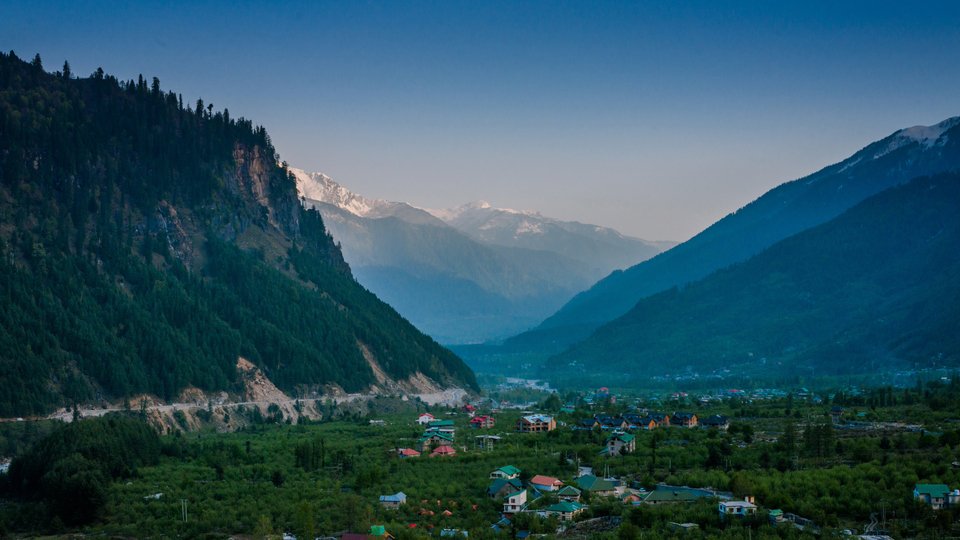
11. Anjani Mahadev:
Anjani Mahadev, a small temple dedicated to Lord Shiva, is located in Manali near Solang Valley. The temple is renowned for its unique Shivalinga made of ice, situated beneath a waterfall. According to legend, this is where Anjani, the mother of Hanuman, meditated and received blessings from Lord Shiva. Accessing the temple involves a trek, horse ride, or ATV journey from the main road. It is a popular pilgrimage site, particularly during winter when the ice Shivalinga is visible. Additionally, visitors can partake in adventure activities such as ziplining, skiing, and photography. and the best time to visit is during the summer months, from May to October.
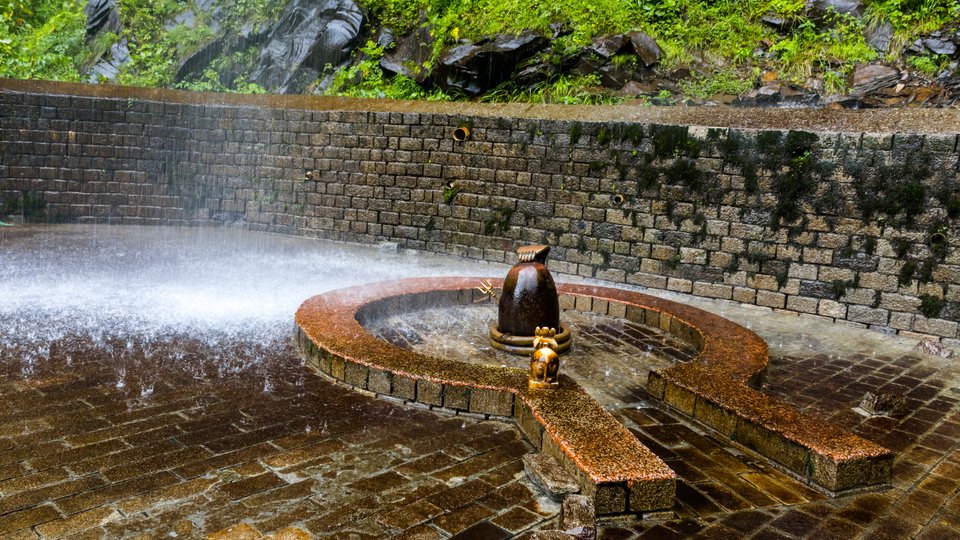
Visit Time: 6 AM to 6 PM
12. Jana Waterfall:
Jana Waterfall, a natural gem near Manali, the renowned hill station, beckons nature enthusiasts and adventure seekers alike. Situated in the village of Jana, approximately 11.5 km from Naggar Castle, this waterfall is ensconced within dense deodar and pine forests, offering a picturesque backdrop of snow-capped mountains. To reach the waterfall, visitors must traverse a rocky and uneven trail, which can pose a challenge for some. However, the trek is immensely rewarding, as the sight of the waterfall cascading down is truly mesmerizing. Near the waterfall, there are stalls selling local snacks and beverages, such as Maggi, chai, and thali, providing a delightful refreshment break. The best time to visit Jana Waterfall is from September to June, when the weather is pleasant, and the waterfall is at its fullest. Jana Waterfall stands as a hidden treasure of Manali, inviting exploration and offering a tranquil retreat amidst nature’s splendor.
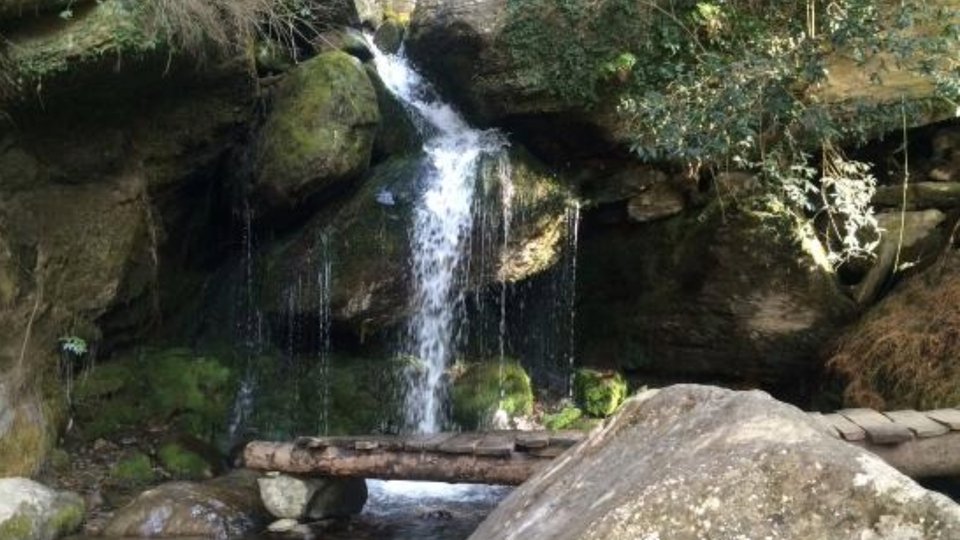
13. Manali Sanctuary:
The Manali Sanctuary, located near Manali, is a nature reserve renowned for its diverse flora and fauna. Spread over an area of 31.8 square kilometers, this sanctuary is home to a variety of wildlife, including Himalayan black bears, leopards, and numerous bird species. The sanctuary’s lush forests of deodar, cedar, and oak trees provide a scenic backdrop for nature lovers and trekkers alike.
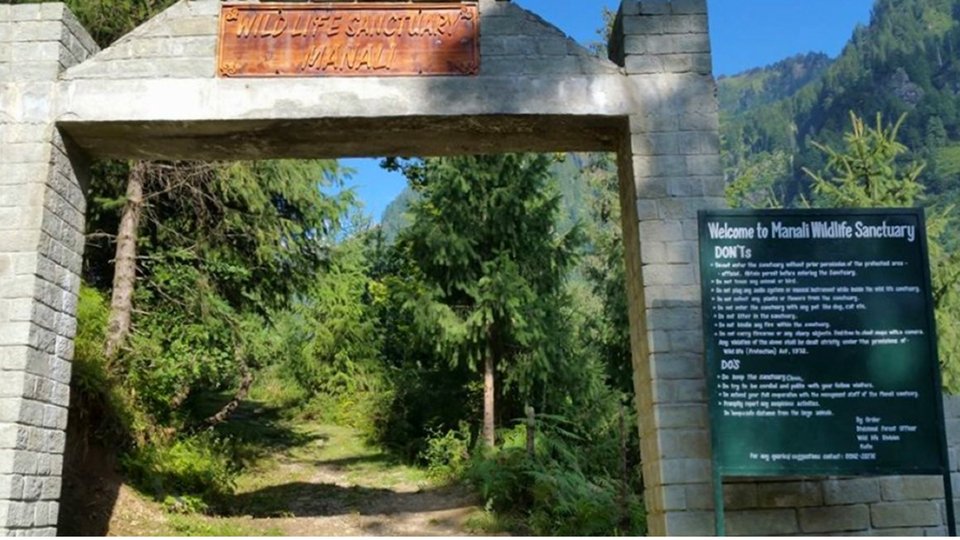
Visit Time: 9:00 AM to 6:00 PM
Entry Fee: INR 10 per person. It is recommended to allocate 2-3 hours
14. Museum of Himachal Culture & Folk Art:
The Museum of Himachal Culture & Folk Art offers a glimpse into the ancient and traditional heritage of Himachal Pradesh, Situated near the Hidimba Devi Temple in Manali, a renowned tourist spot in the Kullu Valley, the museum showcases various artifacts including temple and fort models, traditional attire and jewelry, musical instruments, and intricate wood carvings. Established in 1998, If you have a penchant for Himachal Pradesh’s history and culture, a visit to this museum promises to be a rewarding experience. 😊
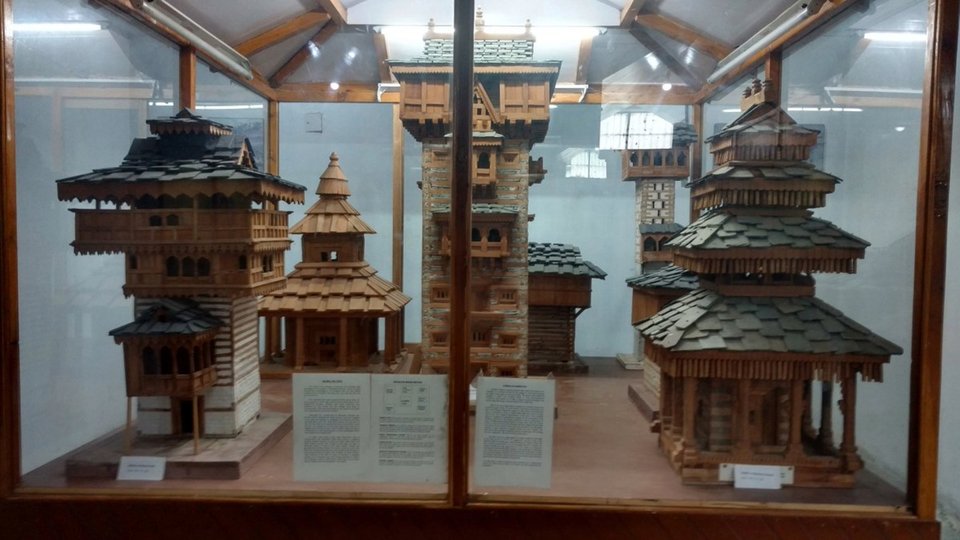
Visit Time: 8:00 am to 8:00 pm
Entry Fee: INR 10
15. Manu Market:
Manu Market, a bustling local market in Manali, is conveniently located near the Mall Road. This vibrant market offers a wide array of products, including clothing, footwear, food items, electrical appliances, cooking utensils, and Tibetan jewelry. It serves as an excellent place to immerse yourself in the local culture and shop for souvenirs. Nearby, you’ll also find a variety of restaurants and cafes where you can savor the local cuisine. If you’re planning a visit to Manu Market, You can easily access it by bus, taxi, or auto-rickshaw from the main bus stand or other parts of the town. As the market tends to be crowded, exercise caution with your belongings and be prepared to negotiate prices.

Visit Time: 10 am to 6 pm
16. Siyali Mahadev Temple:
The Siyali Mahadev Temple, a stunning ancient shrine devoted to Lord Shiva, graces Manali, Situated near the Hadimba Temple, it is enveloped by majestic pine trees and mountains. Renowned for its wooden architecture adorned with intricate carvings depicting mythological tales, the temple is a testament to exquisite craftsmanship. Within its sanctum lies a self-manifested Shivalinga, revered as profoundly sacred by devotees.
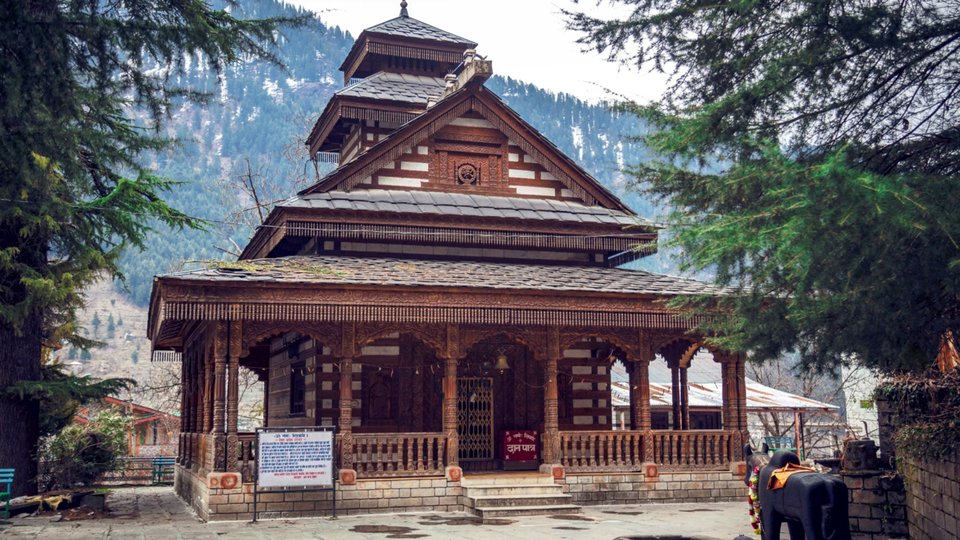
Visit Time: 6:00 AM to 7:00 PM
17. Arjun Gufa:
Arjun Gufa, a cave near Manali, holds significance as the legendary meditation site of Arjuna, a revered figure from the epic Mahabharata, where he is said to have received divine powers from Lord Indra. Nestled amidst lush greenery, the cave offers panoramic views of the surrounding landscape, making it a popular spot for picnics and adventurous exploration. Situated on the left bank of the Beas River, approximately 4 km from Manali and 1 km from Prini village, Arjun Gufa is best visited from March to June, when the weather is pleasant and the valley blooms with flowers. To reach the cave, one must trek along a narrow and steep path for about 2 km. Although challenging, the trek is rewarding, offering breathtaking views of the valley and snow-capped mountains. While the cave remains open 24 hours, it is advisable to explore it during daylight hours.

18. Rahala Falls:
Rahala Falls, a stunning waterfall near Manali, serves as a beloved picnic destination for both locals and tourists exploring Rohtang Pass. Originating from a melting glacier in the Himalayas, the cascading waters of Rahala Falls offer a serene retreat amidst lush surroundings. The area is abundant in flora and fauna, characterized by majestic deodar and silver birch trees, and frequented by various birds and animals. Rahala Falls is a perfect spot to unwind and bask in the beauty of nature. The ideal time to explore Rahala Falls is from March to October, when the water level rises due to the snow melting in the Himalayas.😊
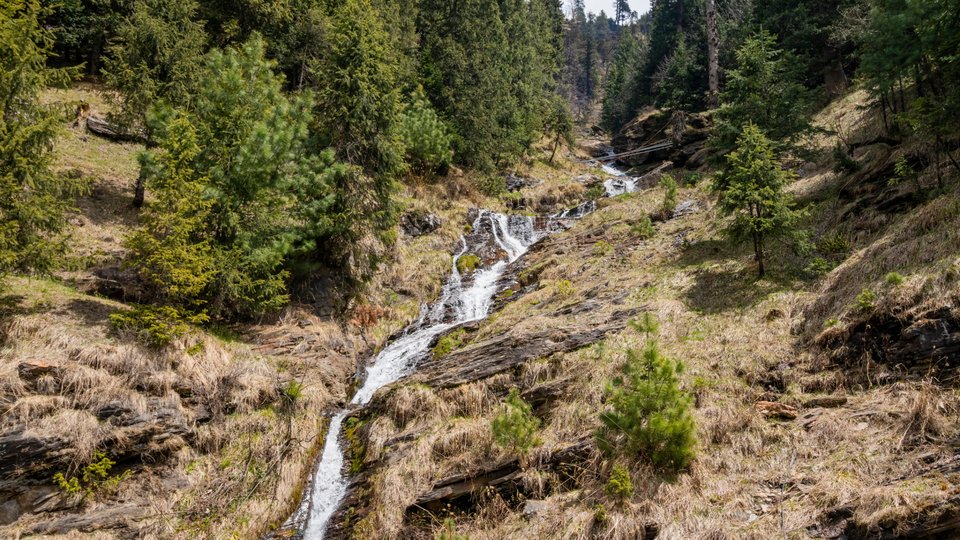
Visit Time: 6:00 AM to 5:00 PM with a suggested exploration time of 1-2 hours
19. Gayatri Temple:
Gayatri Temple, a splendid shrine dedicated to Goddess Gayatri, a form of the Hindu supreme goddess, is nestled in Jagatsukh, approximately 7 km from Manali. Constructed in 1962 by Chidambaram Dixit with the aid of devotees, the temple boasts a Himachali architectural style characterized by elaborate wooden carvings and a pagoda-shaped roof typical of the Himalayan region. The sanctum sanctorum enshrines an idol of Goddess Gayatri, enveloped by lush greenery, creating a tranquil setting ideal for meditation and spiritual rejuvenation.

Visit Time: 7:00 AM to 8:00 PM
20. Rani Nala:
Rani Nala, situated en route to Rohtang Pass from Manali, is a glacier point revered for its breathtaking snowscapes and mountain vistas. Tourists flock to this spot to witness the splendor of snow-clad peaks and experience the thrill of the surrounding natural beauty. The area is renowned for its avalanche zone, where snow cascades down the slopes, creating a mesmerizing spectacle. Visitors must exercise caution and adhere to safety guidelines issued by authorities when exploring Rani Nala. Rani Nala also serves as a trekking destination for adventure enthusiasts keen on exploring the glacier and the adjacent forests. Approximately 51 km from Manali, Rani Nala can be reached by car in about 2 hours. The best time to visit is from April to June when the snow is at its freshest and most abundant.
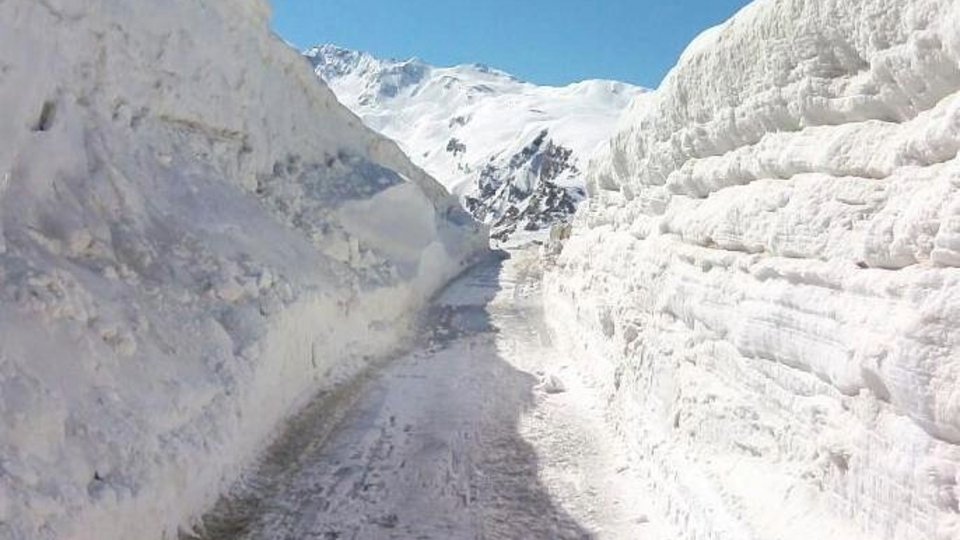
21. Himvalley Manali Amusement & Culture Park:
Himvalley Manali Amusement & Culture Park is a vibrant destination in Manali, offering a range of attractions including rides, cultural performances, a food court, and boating. Situated on the Leh-Manali highway, it stands as the sole amusement park in the area, drawing both tourists and locals seeking entertainment amidst the stunning Himalayan scenery. The park boasts a variety of attractions including a haunted house, a 3D theater, a snow park, a disco, and a magic show. Additionally, it hosts cultural events and festivals such as Dussehra, Diwali, and Holi.
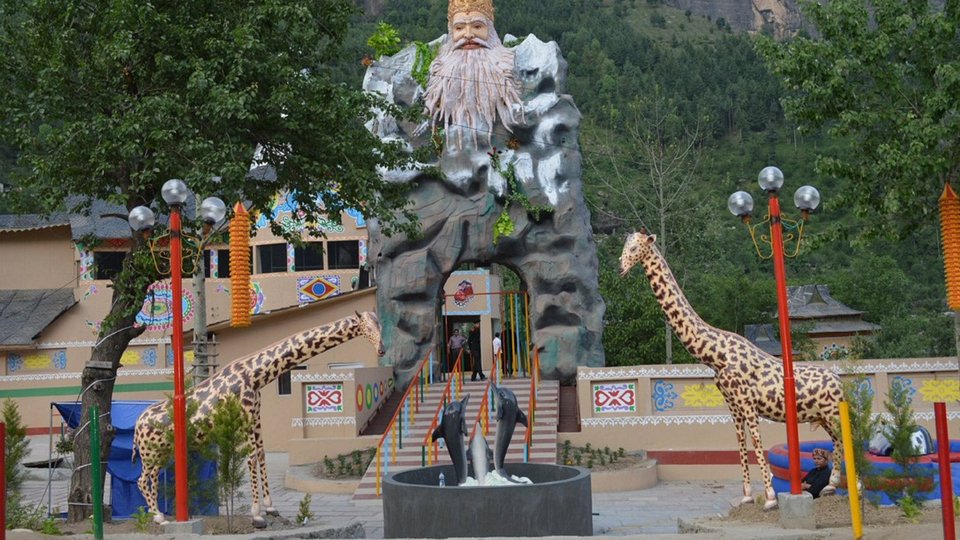
Visit Time: 10 am to 10 pm
Entry Fee: 200 rupees per person.
22. Rozy Falls:
Rozy Falls, located in Manali, is a picturesque waterfall surrounded by lush greenery and towering trees. The falls cascade down rocky cliffs, creating a soothing ambiance and a refreshing retreat for visitors. The area around Rozy Falls is perfect for picnics and nature walks, offering a serene escape from the hustle and bustle of city life. The optimal time to visit Rozy Falls is during the monsoon season when the water flow is at its peak, enhancing the already stunning scenery.
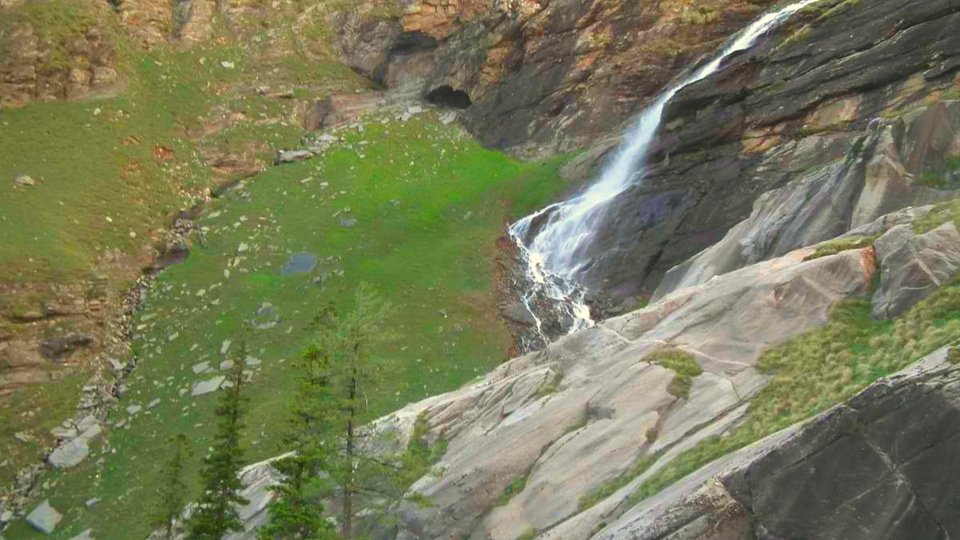
23. Van Vihar National Park:
Van Vihar National Park in Manali is a tranquil oasis of greenery nestled amidst the bustling town. This park is known for its serene ambiance, scenic beauty, and diverse flora. Visitors can stroll along the paved pathways, relax by the Beas River, or enjoy a picnic amidst the lush surroundings. The park also houses a small pond where you can enjoy boating. It’s a perfect spot for nature lovers and those seeking a peaceful retreat in the lap of nature.

Visit Time: 8:00 am to 7:00 pm during the summer months and from 8:00 am to 5:00 pm in winter
Entry Fee: is INR 5 per person
Boating Charges: INR 30 per person for a 15-minute ride
24. Himalayan Nyingmapa Buddhist Temple:
The Himalayan Nyingmapa Buddhist Temple, situated in Manali, is a captivating monastery renowned for its beauty and serenity. Erected in 1957 on land donated by the Wazir of Lahaul in memory of his son, the temple showcases traditional Tibetan architectural styles, featuring a pagoda-like structure adorned in yellow and red hues. A major highlight of the temple is its two-storey statue of Sakyamuni, the historical Buddha, depicted in a meditative pose. The walls of the temple are embellished with vibrant paintings portraying the life and teachings of Buddha. the temple warmly welcomes visitors of all faiths to partake in prayer and experience its tranquil ambiance.

Visit Time: 6:00 AM to 7:00 PM
25. Nehru Kund:
Nehru Kund, a natural spring located on the Manali-Rohtang Pass Highway, derives its name from India’s first Prime Minister, Pandit Jawaharlal Nehru. Believed to originate from the Bhrigu Lake, the spring is a popular attraction for tourists seeking the tranquility of Manali and the clarity of its waters. The optimal time to visit Nehru Kund is from May to October, offering visitors the opportunity to appreciate the scenic beauty of the surrounding mountains and valleys.
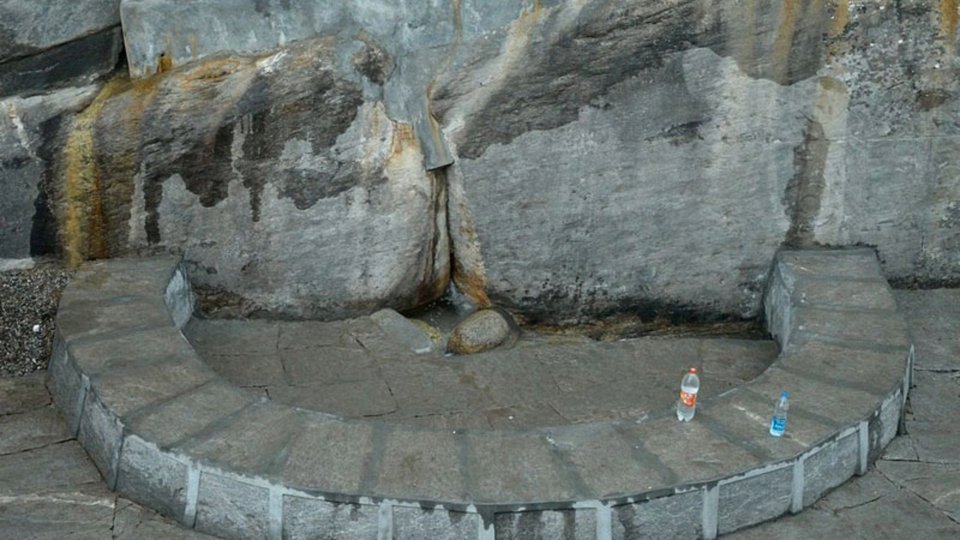
26. Cafe 1947:
Cafe 1947, a popular gastro-pub in Manali, is situated adjacent to the River Beas near Nehru Kund. Renowned as the first and only Taliskar bar in India, it offers a diverse array of cuisines, including continental, Indian, and Israeli fare. The cafe is also a frequent host of live music gigs, adding to its vibrant ambiance. Cafe 1947 is highly regarded by visitors. Some of the most recommended dishes at Cafe 1947 include the “burger of bodom,” “vegeta,” “UFO,” “the slayer pizza,” and “the metallica pasta. If you seek a cozy and lively venue to savor food and drinks with a scenic river view, Cafe 1947 is an excellent choice.
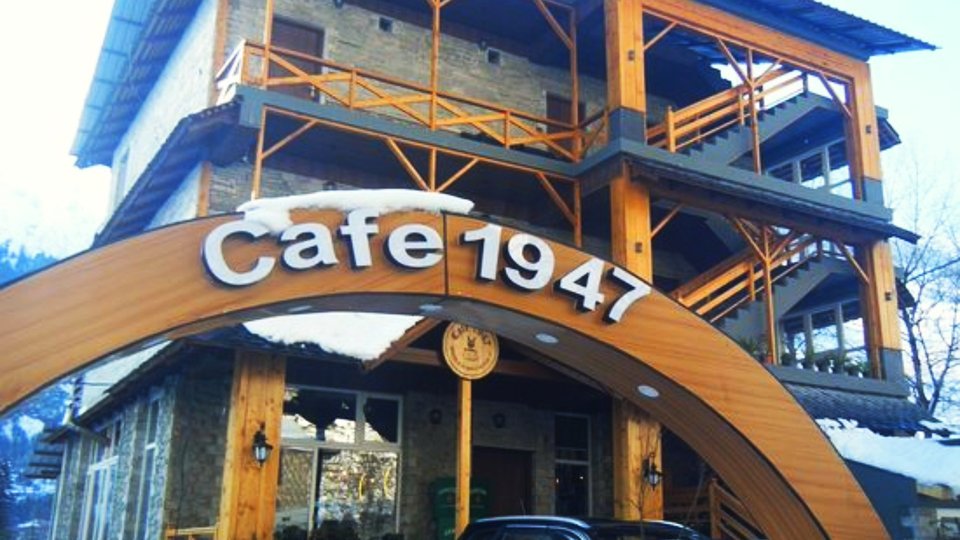
Visit Time: 12:00 PM to 11:00 PM daily, except on Wednesdays when it opens at 7:00 PM
27. Jagatsukh:
Jagatsukh, a charming village near Manali, is renowned for its ancient temples and serene ambiance. This picturesque hamlet offers a glimpse into traditional Himachali culture and architecture, with its old stone houses and narrow lanes. The village is home to the Shikhara-style Jagatsukh Shiva Temple, dedicated to Lord Shiva, and the Gaurishankar Temple, known for its intricate wood carvings. Surrounded by lush greenery and snow-capped mountains, Jagatsukh is a tranquil retreat for nature lovers and those seeking a peaceful escape.
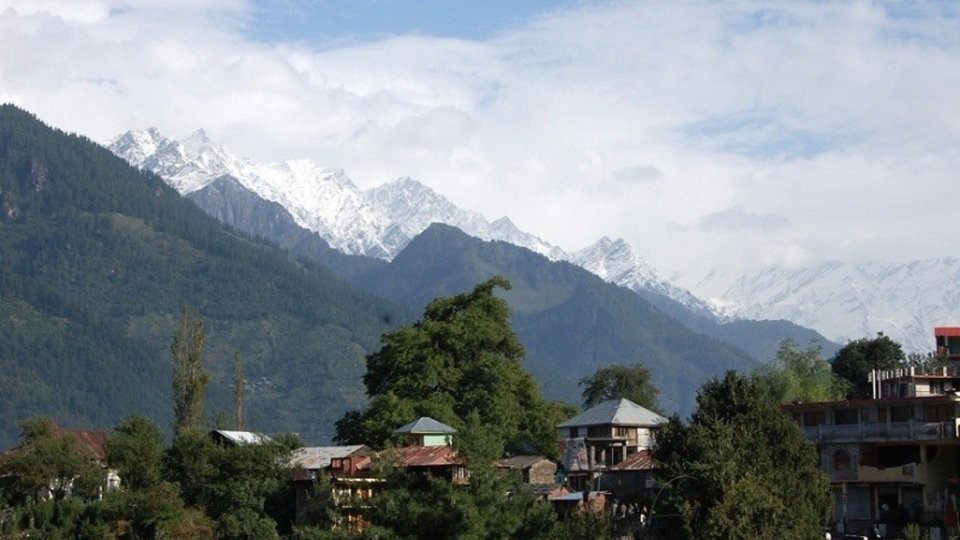
28. Gauri Shankar Temple:
The Gauri Shankar Temple, a historic shrine dedicated to Lord Shiva and Goddess Parvati, is located in the village of Naggar, approximately 20 km from Manali. Constructed in the 12th century, this temple exemplifies the Shikhara style of architecture, characterized by its pyramid-shaped structure topped with a dome. Designated as a protected monument and heritage site in Manali, it stands as the last standing structure of the Gurjara-Pratihara tradition.Adorned with intricate carvings, the temple houses idols of Gauri and Shankar within its sanctum sanctorum. the Gauri Shankar Temple offers a glimpse into ancient architectural and religious traditions.
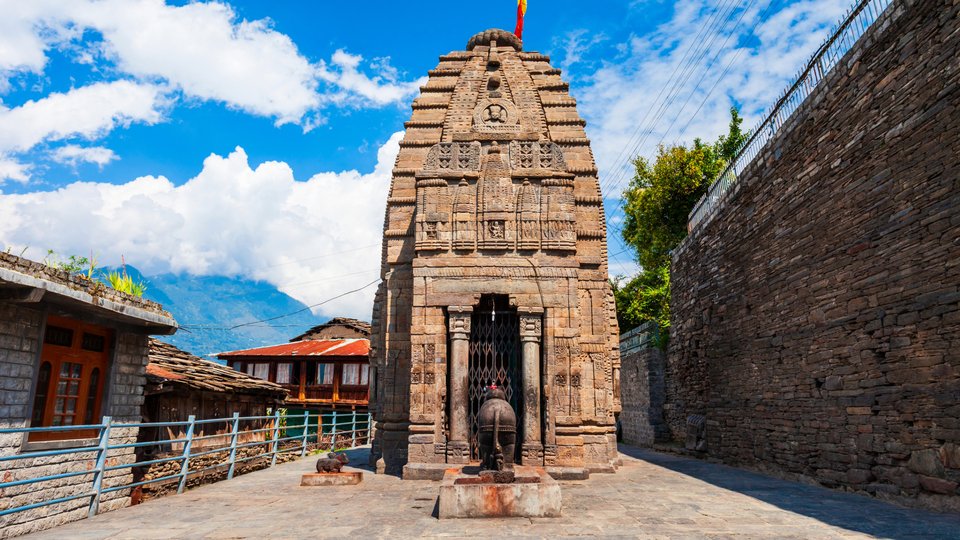
Visit Time: 8:00 AM to 7:00 PM
29. Manali Bazaar:
Manali Bazaar is a vibrant and bustling marketplace that draws tourists and locals alike to the town of Manali, This lively market is renowned for its diverse array of offerings, including handicrafts, jewelry, woolens, shawls, and local delicacies. Additionally, visitors can delight in panoramic views of the snow-capped mountains and the Beas River while exploring the bazaar. Manali Bazaar provides a perfect blend of shopping, dining, and relaxation opportunities. If you’re seeking a memorable shopping and culinary experience in Manali, Manali Bazaar is an ideal destination. 😊
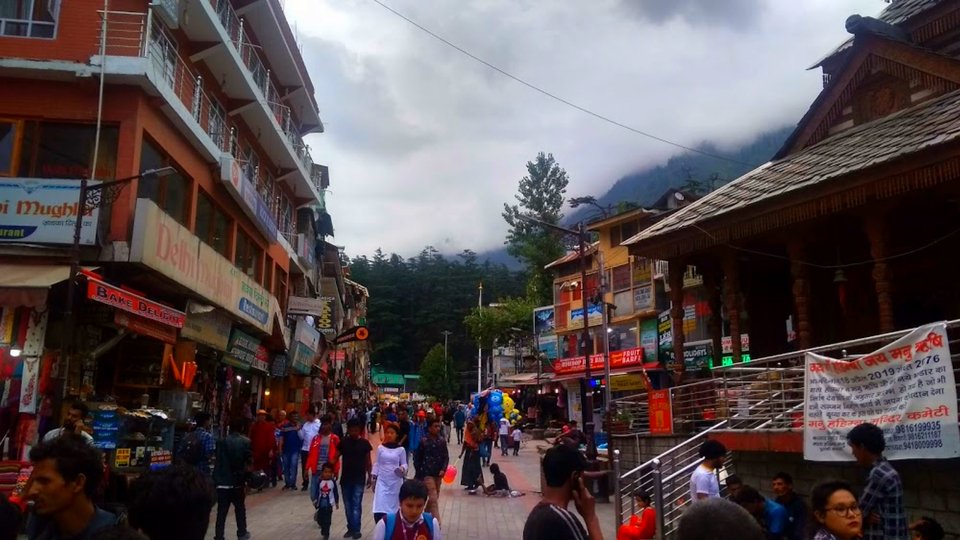
Visit Time: 8:00 AM to 10:00 PM
30. Bhrigu Lake Trek:
The Bhrigu Lake Trek near Manali. is a popular four-day trek that leads to a high-altitude glacial lake at 14,000 ft. Suitable for both beginners and experienced trekkers, the trek offers stunning views of snow-capped mountains and alpine meadows. The trek starts from Gulaba village, includes camping at Gulaba meadows and Rola Khuli, and culminates at the sacred Bhrigu Lake, believed to be the meditation spot of the sage Bhrigu. The lake is frozen most of the year, except in summer when it reflects the blue sky. The trek concludes with a return to Gulaba and a drive back to Manali.
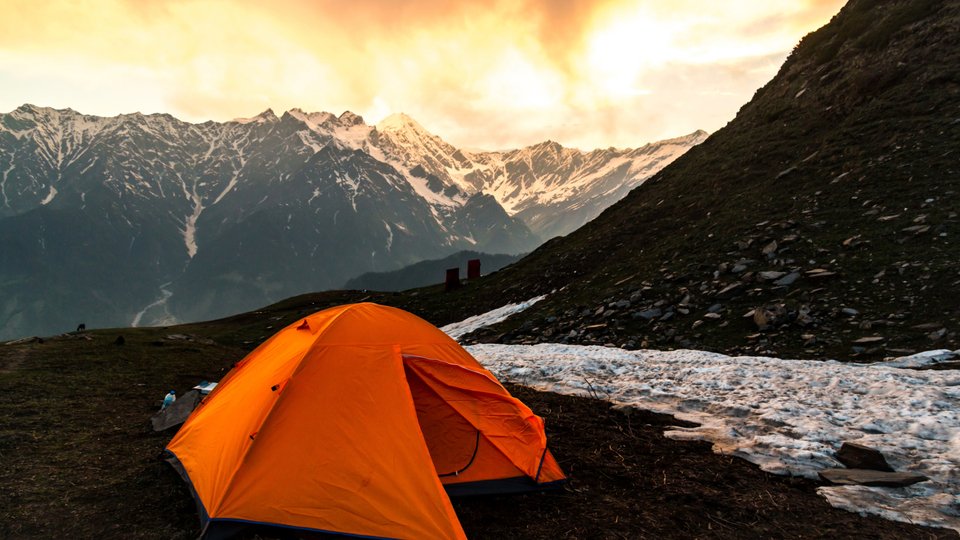
31. Deo Tibba:
Deo Tibba, standing at an impressive height of 6001 metres, is a prominent mountain in the Pir Panjal range of the Manali region. Ranking as the second highest peak in the range, Deo Tibba beckons adventurers with its captivating vistas of valleys, glaciers, and peaks, making it a favored spot for trekking and mountaineering expeditions. The base camp, situated at an elevation of 4480 metres, doubles as the starting point for the Chota Chandratal trek, named after a nearby small lake. The best time to explore Deo Tibba is from May to October, when the weather is pleasant and the meadows burst with colorful wildflowers. Revered by locals as a sacred mountain, Deo Tibba is believed to be the gathering place of deities.
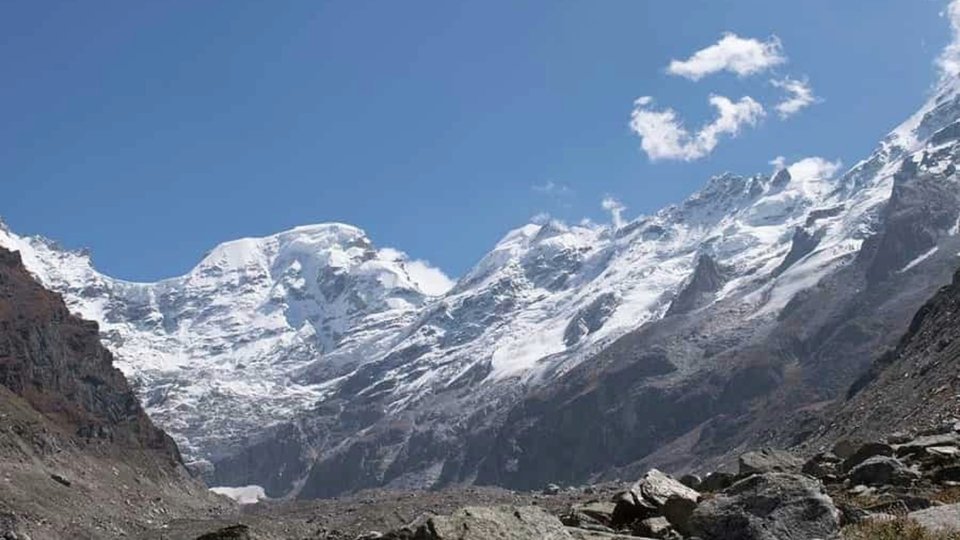
32. Beas Kund Trek:
The Beas Kund Trek is a well-known trekking route in Manali, leading to the origin of the Beas River—a picturesque alpine lake encircled by snow-capped mountains. This trek caters to both novice and seasoned trekkers, offering breathtaking vistas of the Solang Valley, Pir Panjal Range, and Dhauladhar Range. The trek culminates at Beas Kund, where you’ll reach an elevation of 12,772 ft—the highest point of the trek. Depending on your fitness and pace, the trek typically spans 3 to 4 days. The best time to visit Beas Kund Trek is between mid-May and mid-October.

33. Patalsu Peak:
Patalsu Peak is an ideal summit trek for novices near Manali, Himachal Pradesh, offering breathtaking views at an altitude of 4200 m (13,800 ft). The peak provides panoramic vistas of the Kullu valley and prominent peaks like Hanuman Tibba, Friendship Peak, and Manali Peak. Beginning from Solang village, approximately 13 km from Manali, the trek winds through meadows, pine, deodar, and oak forests, as well as alpine pastures. Spanning 4 days and covering a distance of 17 km, the trek is best undertaken from April to October, when the weather is pleasant and the snow is manageable.
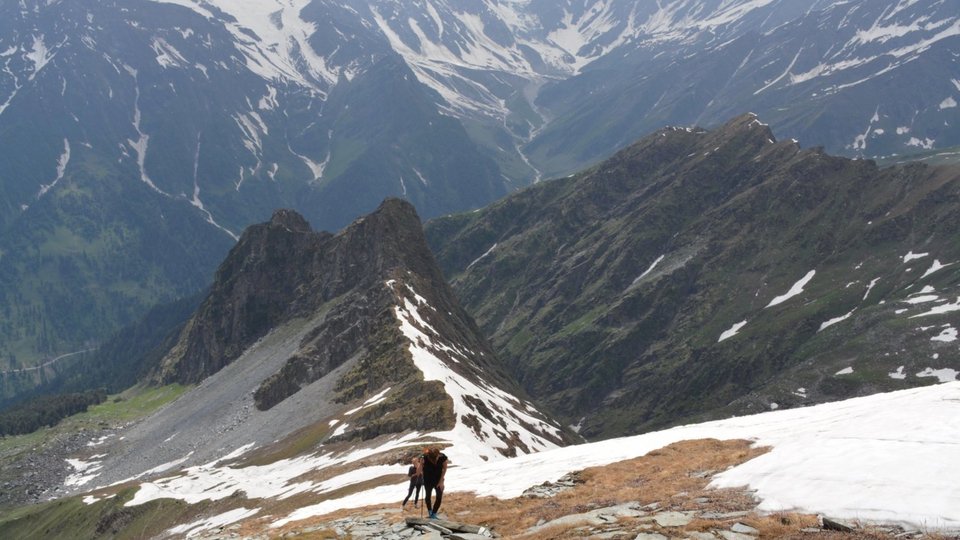
34. Bara Bhangal Trek:
The Bara Bhangal Trek presents a challenging and thrilling journey from Manali to the remote village of Bara Bhangal in the Western Himalayas. This trek entails traversing two high-altitude passes – Kalihani Pass and Thamsar Pass – while treating you to breathtaking vistas of the Dhauladhar and Pir Panjal ranges. It also provides an opportunity to immerse yourself in the region’s rich flora and fauna, diverse culture, and unspoiled beauty. The optimal times for this 11-day trek are June or September-October, when the weather is clear and the snow is manageable, though the trek’s difficulty level is high.
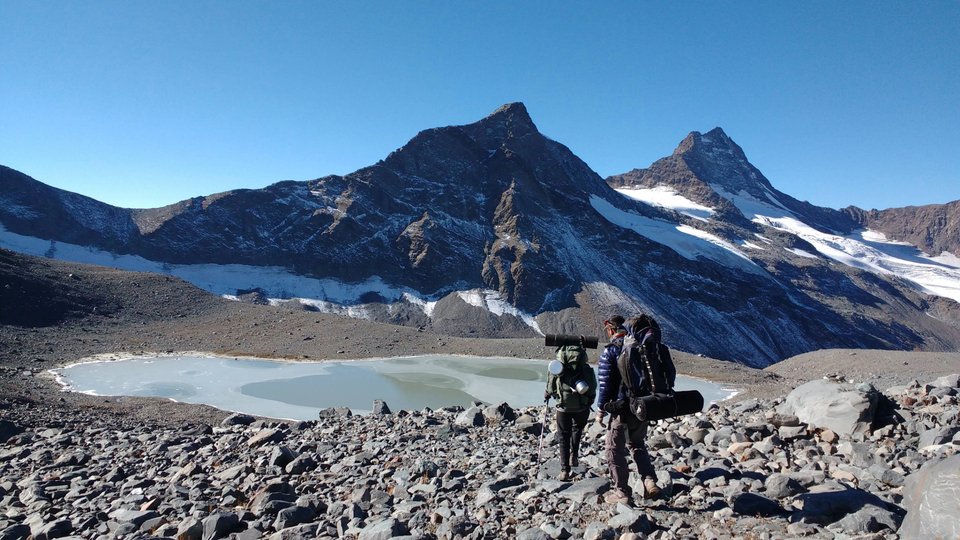
35. Kothi:
Kothi, a picturesque village near Manali. sits nestled at the base of Rohtang Pass, a renowned tourist spot. The village boasts breathtaking vistas of snow-covered peaks, glaciers, and the Beas River coursing through a deep gorge. Kothi serves as a launchpad for camping and trekking adventures to Rohtang Pass. Its serene charm has drawn numerous artists, writers, and filmmakers seeking inspiration from its natural allure. For a tranquil and scenic retreat in Manali, Kothi is a perfect choice.
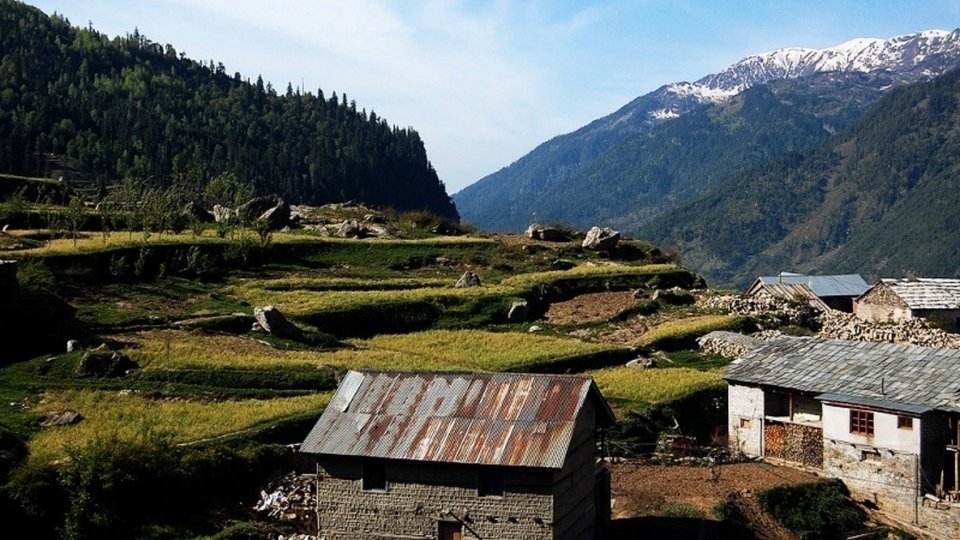
These were some places to visit in Manali. Hope you liked it, Have a safe journey!
How To Reach Delhi To Manali
- By Road: The most common way to reach Manali from Delhi is by road. The distance between the two cities is approximately 550 km, and the journey takes around 12-14 hours by bus or car, depending on the traffic and road conditions. You can either drive yourself or take a bus from Delhi to Manali. Several private and state-run buses operate on this route, offering both regular and Volvo services.
- By Air: The nearest airport to Manali is Bhuntar Airport, located approximately 50 km away. However, there are no direct flights from Delhi to Bhuntar. You can fly from Delhi to Chandigarh or Kullu, and then take a taxi or bus to Manali.
- By Train: There is no direct train connectivity to Manali. The nearest railway stations are Chandigarh and Joginder Nagar. From Chandigarh, you can take a bus or taxi to Manali, which is around 310 km away.
Here Are Some Trains From Delhi To Chandigarh Railway Station,
| Train Name | Train Number | Departure Time | Arrival Time | Duration | Distance | Fare |
|---|---|---|---|---|---|---|
| Vande Bharat Express | 22457 | 13:15 | 17:25 | 4h 10m | 266 km | ₹ 1,500 – ₹ 2,800 |
| Shatabdi Express | 12005 | 17:15 | 20:30 | 3h 15m | 266 km | ₹ 700 – ₹ 1,500 |
| Shatabdi Express | 12011 | 07:40 | 10:59 | 3h 19m | 266 km | ₹ 700 – ₹ 1,500 |
| Shatabdi Express | 12045 | 19:15 | 22:35 | 3h 20m | 266 km | ₹ 700 – ₹ 1,500 |
| Kerala Sampark Kranti Express | 12217 | 06:25 | 09:50 | 3h 25m | 266 km | ₹ 140 – ₹ 1,600 |
| Karnataka Sampark Kranti Exp | 22685 | 12:10 | 15:50 | 3h 40m | 266 km | ₹ 140 – ₹ 1,600 |
| Jan Shatabdi Express | 12057 | 14:35 | 18:45 | 4h 10m | 266 km | ₹ 140 – ₹ 700 |
| Netaji SF Express | 12311 | 21:10 | 01:35 | 4h 25m | 266 km | ₹ 140 – ₹ 1,600 |
| Paschim SF Express | 12925 | 11:05 | 15:35 | 4h 30m | 266 km | ₹ 140 – ₹ 1,600 |
| Agra Cantt – Hoshiarpur Express | 14011 | 22:20 | 03:13 | 4h 53m | 266 km | ₹ 140 – ₹ 1,600 |
| Unchahar Express | 14217 | 04:15 | 09:15 | 5h 0m | 266 km | ₹ 140 – ₹ 1,600 |
| Tatanagar – Jammu Tawi Express | 18101 | 21:25 | 02:53 | 5h 28m | 266 km | ₹ 140 – ₹ 1,600 |
- By Bus: Several private and state-run buses operate between Delhi and Manali. The journey takes around 12-14 hours, depending on the traffic and road conditions. You can book bus tickets online or through travel agencies in Delhi.
- By Car: If you prefer a more comfortable and flexible option, you can hire a taxi or drive your own car from Delhi to Manali. The journey takes around 12-14 hours, depending on the route and traffic conditions.
- Book A Cab: you can book a cab from our website along with a customized itinerary, or can hire just a cab for your next trip. So just do hurry. Call Us On: +911223577273
Nearby Places To Visit At Manali
| City | Distance from Manali | Places to visit |
|---|---|---|
| Kullu | 40 km | Raghunath Temple, Bijli Mahadev, Parvati Valley |
| Kasol | 75 km | Chalal Trek, Kheerganga, Manikaran Gurudwara |
| Shimla | 248 km | Mall Road, Jakhoo Temple, Kufri |
| Dharamshala | 238 km | Dalai Lama Temple, Bhagsu Waterfall, Triund |
Best Time To Visit Manali
- Summer (March to June): Pleasant weather, ideal for sightseeing and outdoor activities like trekking and paragliding.
- Monsoon (July to August): Moderate to heavy rainfall, lush greenery, but potential for landslides and roadblocks.
- Autumn (September to November): Pleasant weather, clear skies, ideal for sightseeing and adventure activities.
- Winter (December to February): Cold weather, snow-covered landscapes, perfect for snow sports and experiencing local festivals.



